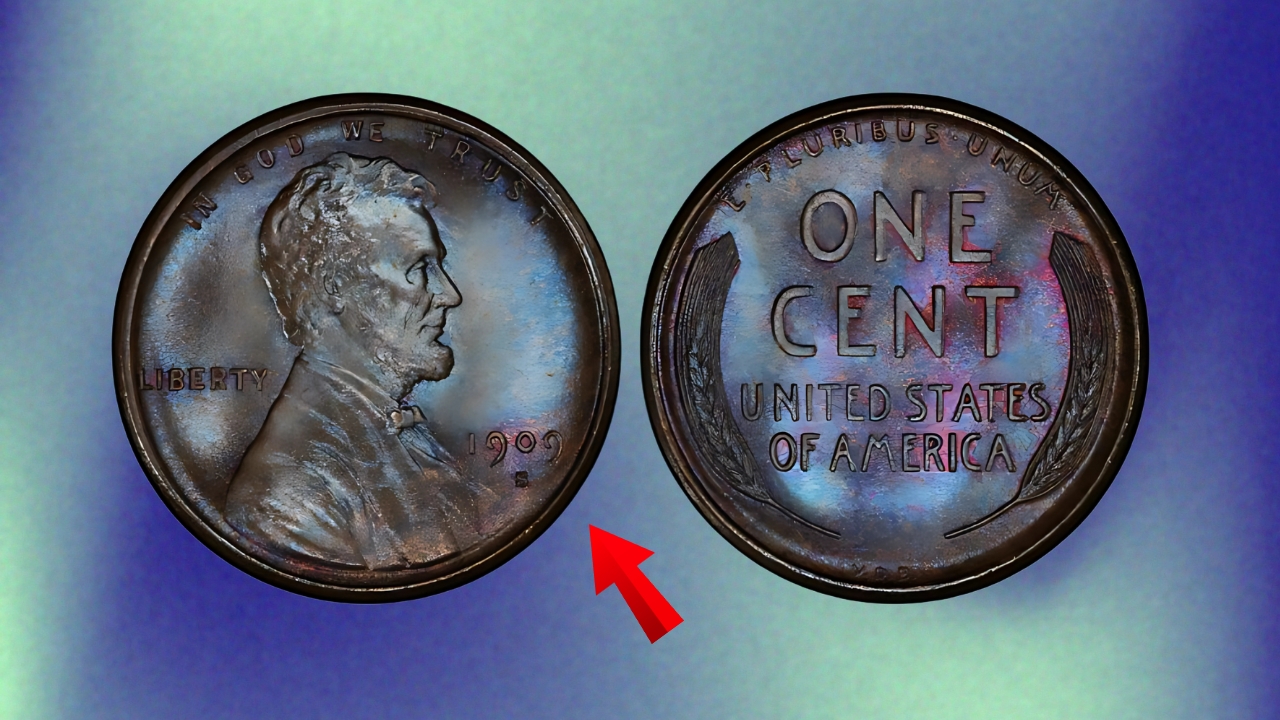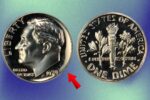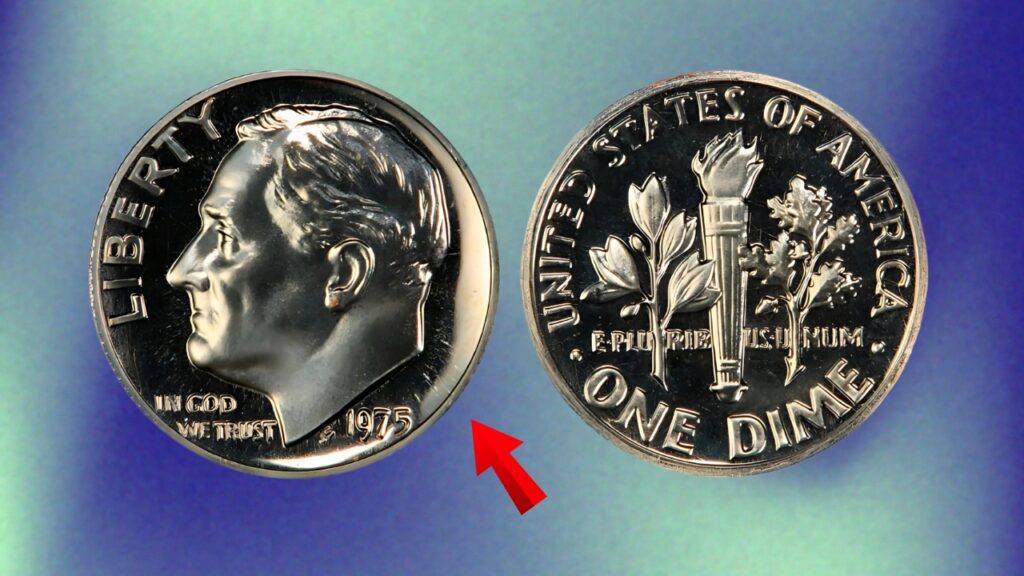Wheat Penny : There has always been widespread interest within the hobby of numismatics for oddball coins, but there are very few that quite capture the imagination like this humble common-centers.
Manufactured 1909-1958 and available in brilliant copper, the penny depicts a side profile of Abraham Lincoln, is named for the wheat ears to be seen at either reverse (one on each side), this symbol has become an American icon.
While most wheat pennies sell for only a little more than their face value-a few cents, by and large-there are certain “bric-as” in numismatic circles that seem to defy mere logic and reason. Prices for them are unbelievable!
Table of Contents
The Mystique of Wheat Pennies

To begin our list of the most valuable wheat pennies which might be fortuitously lurking about invisibly today, it is worth understanding just why these coins carry such an enduring lure.
As I mentioned earlier, the wheat penny (Lincoln Cent to give it its official title) contains a design which is unique in American mint history. 1909 marked its inaugural appearance on our national coinage; Lincoln’s hundredth birthday being commemorated by a U.S. Mint that depicted an actual human being — as opposed to allegorical figure.
Minted over a period of 50 years, wheat pennies witnessed both great celebrations and tragedies-premature deaths and natural disasters, wars like World War II and the Korean Conflicts. Then come the 1920s, when penny led up to nickel production.
Some have been saved by ordinary citizens who sensed their historical significance, but still many another of them continued to circulate without knowledge or thought given towards their potential value.
What makes some wheat pennies valuable isn’t just that they’re old-it’s where they’ve been and what they’ve been through.
Production errors, experimental compositions, limited mintages, and historical context-the “back story” to a coin-all combine in determining a coin’s value. Here we look at five wheat pennies which are well beyond any reasonable expectation of finding in circulation today.
The Holy Grail: 1943-D Copper Penny ($346 Million)
The 1943-D copper cent may be considered the most valuable coin in American numismatics. Its value is generally accepted by both collectors and dealers.
During World War II, copper was needed for the war effort, so the U.S. Mint made pennies zinc-coated steel instead. Machines at the Denver mint accidentally left a few copper planchets (blank coins) in their midst; these were struck in 1943, without the mint’s knowledge or sanction.
Only one 1943-D copper cent is known to exist—this authentic rare piece was even offered for sale over a decade ago for $1.7 million. In today’s market it would command an estimated price of $346 million, given its perfect condition and unmatched rarity.
Thomas Dyer, a retired postal worker, found the coin in his pocket change in 1979. At first he thought it was simply an odd color 1943 steel cent, but it could scarcely have been further from metal.
After the individual expert consultations were concluded, authenticity was established. Dyer also finally received recognition (or shame) for owning and selling a genuine 1943-D copper cent from Denver.
Eleanor Richards, curator of the National Numismatic Collection, says: “There’s no telling whether another example will ever turn up. The fact that one was found in circulation several decades after it was struck suggests that others may still be out there.”
The Wheat Penny That Shouldn’t Exist: 1944-S Steel Cent ($175 Million)
And just as a few 1943 planchets were inadvertently left in the machinery when production switched to copper, so also some surplus steel blanks from 1943 ended up being made into 1944 cents. The San Francisco mint’s 1944-S steel cent has the most calling card of all: only two verified living specimens exist.
One was found by a bank teller in Sacramento in 1957 who recognized it didn’t look like any other penny from the roll she was handling that day. The other appeared in the 1990s from a child’s collection, having been picked up as change decades earlier.
Coin expert Martin Loggins puts it this way, “The 1944-S steel cent is an incredible example of a transitional error. The mint in San Francisco was known for its extraordinary attention to detail.
There had been very few mistakes at this particular facility, making any error from there almost unique. If it were to come onto the market today, we would expect an asking price of at least $175 million from deep-pocketed collectors or institutions wishing this historical jewel for their museums.”
The shiny surface of these steel cents is a distinguishing mark that makes them easier to find than some other rare varieties, but there is evidence of few have turned up. Much of what remains has likely been lost to history – in the pockets, pocketses and change jars across America.
The Legendary
“The 1955 Double Die isn’t just valuable; it’s a piece of American folklore,” says numismatist Gabriela Ortiz. “Every collector dreams of finding one, and since so many entered circulation, there’s still a real possibility of discovering one in change or in an old collection from a relative.”
Unique Pattern: 1943-S Bronze Experimental Cent ($228 Million)
The metal shortage of World War II saw the U.S. Mint experimenting with different materials. It used zinc-coated steel for the 1943 pennies, though among this year’s offerings was an instance of a bronze alloy similar to but not exactly of the traditional copper composition.
Only three 1943-S bronze experimental cents have been confirmed, and one of them turned up in city parking meter change in San Francisco in 1966. The finder, Marina Chen, kept the coin as a curiosity for years before having it authenticated in the 1980s.
“This coin is particularly special because it wasn’t an accident; it was intentional,” says historian James Worthington. “It’s the story of how America rose to meet the war challenges with creativity.”
If one were brought to market today, experts estimate it could sell for about $228 million because of its historical significance and rarity. The coin’s color, a little more red than most pennies, makes its recognition as possibly the only one in existence achieved even by laypeople.
The Mysterious Overdate: 1909-S VDB Over 1908 ($293 Million)
The final entry on our list combines extreme rarity with historical significance. The 1909-S VDB penny is already a key date in this series, owing to its low mintage and the trouble caused by designer Victor David Brenner’s initials in such a conspicuous place as VDB.
However, numismatic researchers have confirmed at least one example where the die was repunched from 1908 over to 1909.
This overdate variety has traces of the original “8” under the “9” in its date. The reason why this coin is so valuable is that it combines VDB initials (Already a scarce variety) with the rare San Francisco mint mark and an overdate feature unique to 1909 lincoln cents.
“It’s the perfect storm of numismatic value,” comments auction specialist Rebecca Thompson. “All those desirable attributes bundled together – a first year issue that’s rare, a VDB which is hard to find and a San Francisco coin! It’s like hitting the jackpot.” Authenticated examples do exist in the form of one coin, but reports continue from time to time about two other wild ones that may have made it home too.
If sold at aucti0n, wealthy collectors would probably bid £125 million for it in the belief that they could be buying the ultimate wheat penny actually now on parade in museums around the world.
1. Could You Own One?
It isn’t overwhelmingly unlikely that you’ll find one of these little prizes; small though the odds may be still much depends on luck.
In fact, there is no end to such cases cataloged in books about money, reports of people who came upon valuable coins while sorting their pocket change or stumbled across an old stash and similar stories all the time–even some pennies inside walls during construction work in a house projectetc. If you think you might have an interesting penny, consider these suggestions for identification: 1. Examine the date and mint mark – If your coin is from 1943 (copper), 1944 (steel), 1955 (double die), or 1909-S (VDB), maybe it could be a winner.
2. Use a magnet – A 1943 penny is attracted to magnets (unless it happens to be copper), while an example from 1944 does not adhere.
3. Scrutinize with a magnifying glass – Inspect the ’55 penny, hunting for errors; study the ’09 coin through your magnifier and you may notice remnants of an “8” below a “9.
4. Weigh the coin – Steel pennies weigh 2.7 grams, while copper ones come in at 3.11. If you believe you have any of these valuable coins, do not clean them (to do so is to erode their value) but take them to be appraised by a reputable numismatic or a grading service.
The Joy of Hunting
The enduring appeal of collecting wheats speaks to a value beyond mere money. These coins help us remember our history together, reveal that even in buying tea everyday one can sometimes unearth extraordinary treasures.
“There’s always been an attraction to collecting for the broad base,” notes Daniel Williams, Professor of Numismatics at a rural university taking pleasure in the discipline of close observation.
“All you need is a good pair of eyes and a fair amount of background knowledge about what you’re looking at,” adds Williams, “and thenwith a bit of luck–not too much though!, just on occasion–you can discover something truly amazing
.”Watching you can not afford such an optimistic attitude: living on oatmeal everyday, fighting for survival in the workplace by any dirty means necessary after all it’s pretty ridiculous Most of all contests.On the other hand, somebody owns these rarities.
With millions of wheat pennies still stashed away and used as change in the far corners of America, your next great numismatic find might be lying right in your pocket as you read this.

